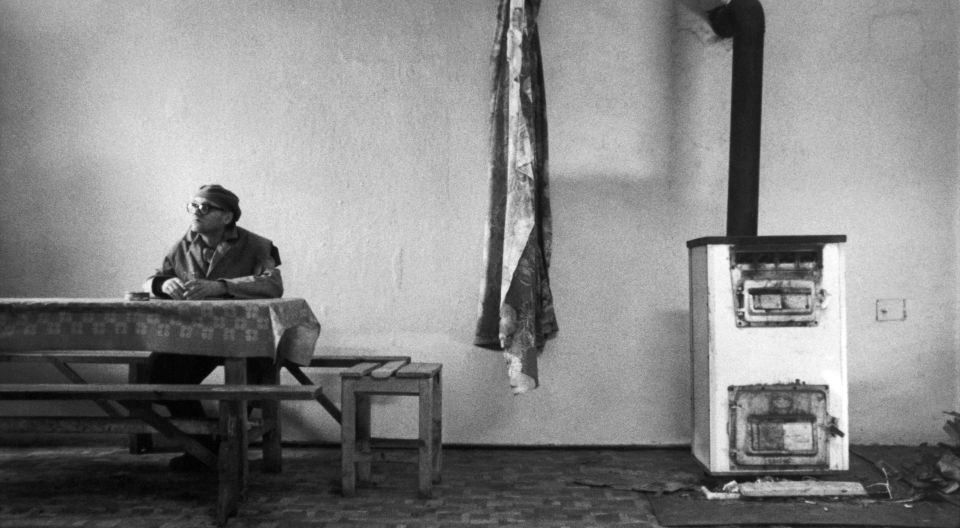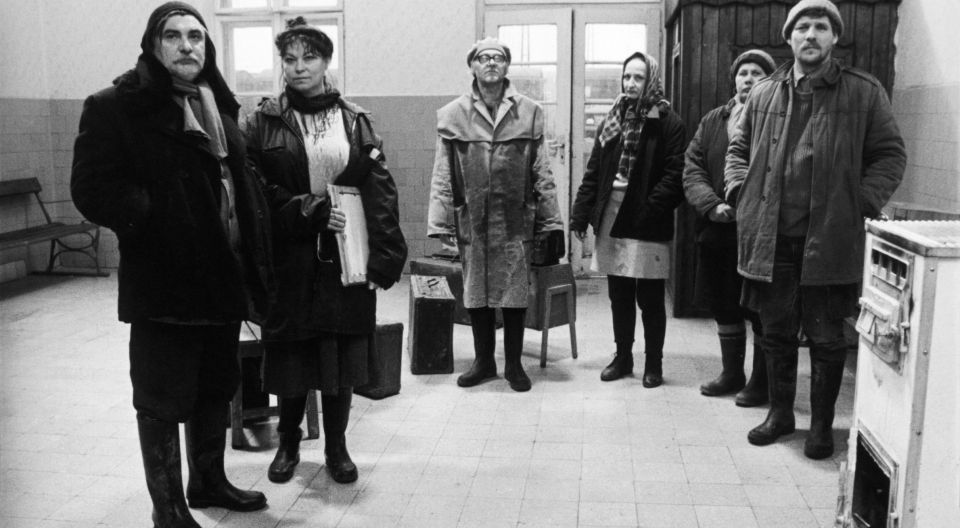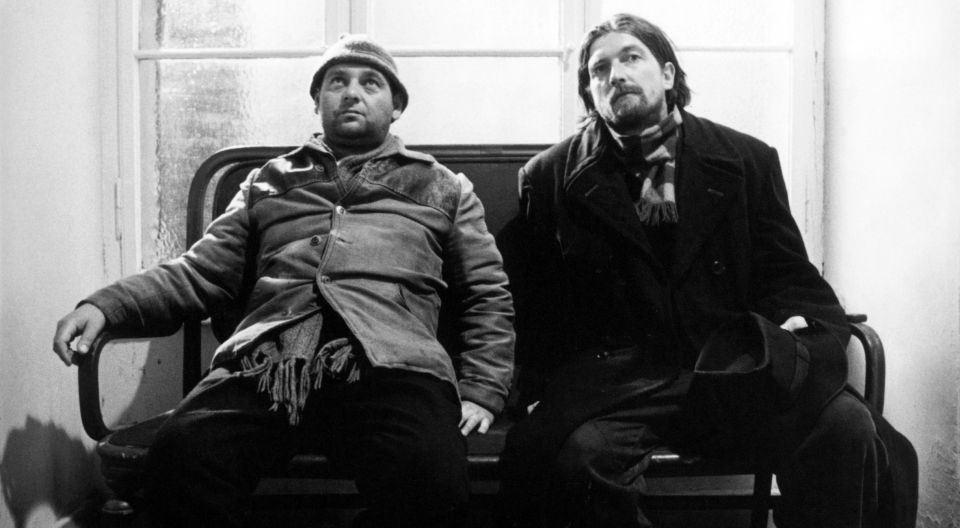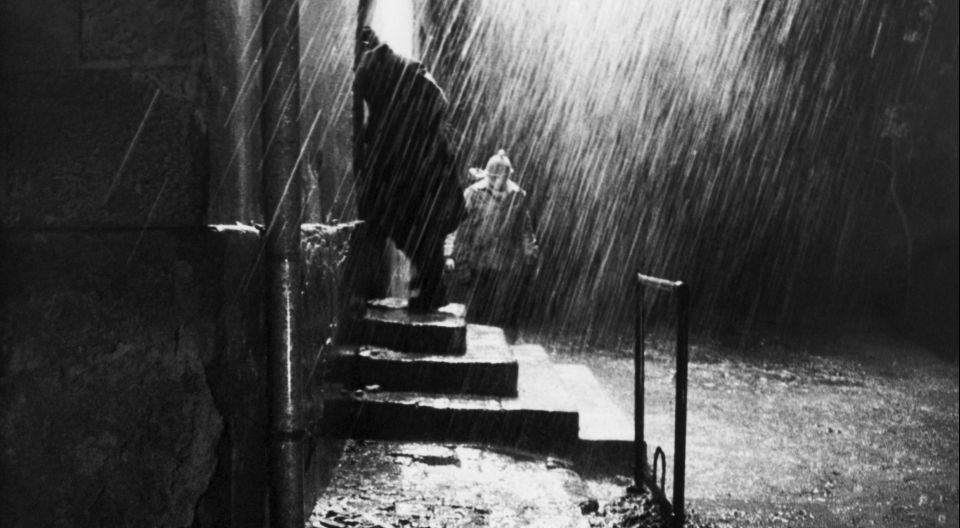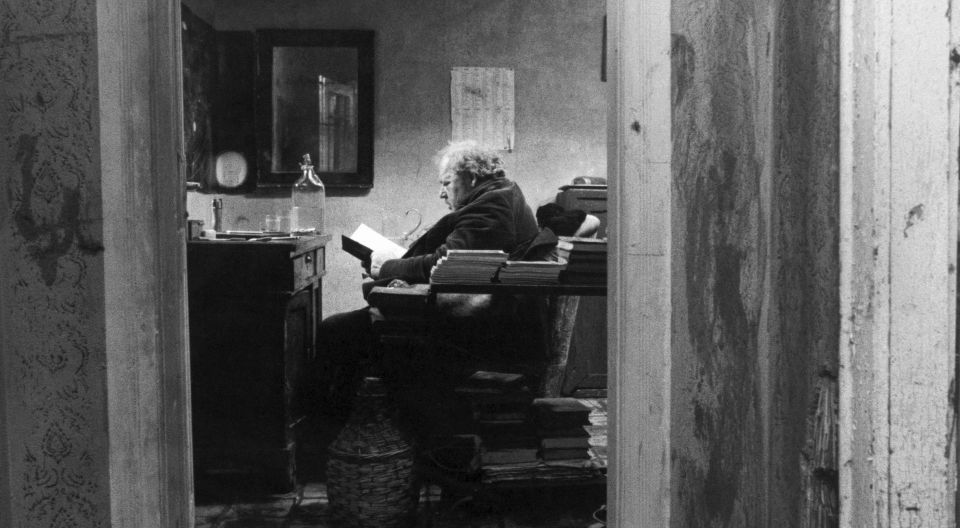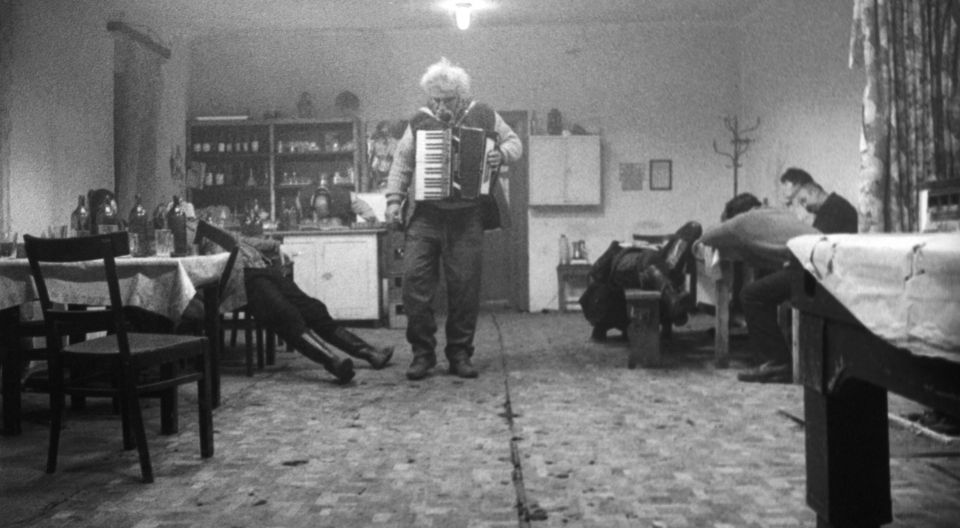15.
11.
2019.
Others
Others
New Horizons Association and Cinergia European Cinema Forum invite to the film’s special screening on the 25th anniversary of its premiere to Helios Sukcesja cinema on 24 Nov., at 14.00.
Details:
https://www.cinergiafestival.pl/program/pokazy-specjalne/742-szatanskie-tango
SATAN’S TANGO, dir. Béla Tarr
A small, remote village in the Great Hungarian Plain, the end of the communist era. The villagers - employees of a dilapidated agricultural cooperative, are stagnant, with no prospects for a better life. Their material poverty accompanies spiritual emptiness and moral degradation. However, the heroes of the film are waiting for some sign, for the arrival of the Saviour, which will allow them to start a new life.
"Satan’s Tango" duration 445 min. (7 hours 25 min.) is divided in three parts:
Part 1: 2 hours 25 min. (break: 30 min.)
Part 2: 2 hours 10 min. (break: 30 min.)
Part 3: 2 hours 50 min.
The whole screening time (including the breaks) 8 hours 25 min. According to critics' opinions, the film set new limits for the language of cinema, becoming an inspiration for many directors, including Gus Van Sant. The epic, over seven hours long, black and white, devoid of dialogues and a typical plot, owes its impact primarily to long, hypnotic shots (the film consists of only 39 scenes) and the cyclical structure determined by the recurring dance motif - the title Satan’s Tango.
Béla Tarr was born on July 21, 1955 in Pécs. He made his first amateur films at the age of 16. At the end of the 70s, he began working with Béli Balazs film studio which in 1979 helped him finance his first feature film debut “Family Nest ” (Családi tűzfészek). In 1981, he graduated from the Film Directing Department of the Budapest Film School. In 1994, he made his most famous work - the 400-minute film, "Satan’s Tango" (Sátántangó), a film adaptation of László Krasznahorkaia’s novel. Béla Tarr is considered a great individualist who creates hypnotic, allegorical films without narrative shortcuts, compared to Tarkowski's style but devoid of his idealism.
Film critics wrote:
The crown venture of the great individualist of the end of the century who created hypnotic, allegorical films without narrative shortcuts (...). In this vision of the Dante's labyrinth of hell on earth, with people spinning in a closed loop of time in a circle of false hopes, Irimiás is the leader in a land without God where there are no bell towers anymore. Tarr clearly avoids elucidation - except maybe for one scene, when the villain, taken down by momentary fear, falls to his knees in front of a ruined church, the place of Estike's death – nevertheless, the metaphysical dimension of his work is obvious, and Irimiás can be considered one of the best contemporary personifications of Satan. — Adam Garbicz, Satan’s Tango, The World Encyclopedia of Religious Film
In "Satan’s Tango", Krasznahorkai, like no one else, showed the complete downfall of society crushed by the boredom and hopelessness of the province, the sadness of communism and the defeat of the "scarcity economy", the misery of a village forsaken by God and the First Secretary somewhere in the depths of the Puszta. The world that only Satan remembers because it is his kingdom. The world in which, by drinking home-made vodka, people balance between despair and the hope of escape from this lowest infernal circle, waiting for the promised Messiah, who instead of leading them out of the house of captivity, turns out to be an ordinary impostor. (...) Béla Tarr, , an incredible director, just like Krasznahorkai in literature, completely separate from the world of cinematography, hardly comparable with any other artist, transformed "Satanic Tango" into a film masterpiece of the same title. — Krzysztof Varga, War of the End of the World, Tygodnik Powszechny
Source: promotion materials, Stowarzyszenie Nowe Horyzonty
SATAN’S TANGO, dir. Béla Tarr
A small, remote village in the Great Hungarian Plain, the end of the communist era. The villagers - employees of a dilapidated agricultural cooperative, are stagnant, with no prospects for a better life. Their material poverty accompanies spiritual emptiness and moral degradation. However, the heroes of the film are waiting for some sign, for the arrival of the Saviour, which will allow them to start a new life.
"Satan’s Tango" duration 445 min. (7 hours 25 min.) is divided in three parts:
Part 1: 2 hours 25 min. (break: 30 min.)
Part 2: 2 hours 10 min. (break: 30 min.)
Part 3: 2 hours 50 min.
The whole screening time (including the breaks) 8 hours 25 min. According to critics' opinions, the film set new limits for the language of cinema, becoming an inspiration for many directors, including Gus Van Sant. The epic, over seven hours long, black and white, devoid of dialogues and a typical plot, owes its impact primarily to long, hypnotic shots (the film consists of only 39 scenes) and the cyclical structure determined by the recurring dance motif - the title Satan’s Tango.
Béla Tarr was born on July 21, 1955 in Pécs. He made his first amateur films at the age of 16. At the end of the 70s, he began working with Béli Balazs film studio which in 1979 helped him finance his first feature film debut “Family Nest ” (Családi tűzfészek). In 1981, he graduated from the Film Directing Department of the Budapest Film School. In 1994, he made his most famous work - the 400-minute film, "Satan’s Tango" (Sátántangó), a film adaptation of László Krasznahorkaia’s novel. Béla Tarr is considered a great individualist who creates hypnotic, allegorical films without narrative shortcuts, compared to Tarkowski's style but devoid of his idealism.
Film critics wrote:
The crown venture of the great individualist of the end of the century who created hypnotic, allegorical films without narrative shortcuts (...). In this vision of the Dante's labyrinth of hell on earth, with people spinning in a closed loop of time in a circle of false hopes, Irimiás is the leader in a land without God where there are no bell towers anymore. Tarr clearly avoids elucidation - except maybe for one scene, when the villain, taken down by momentary fear, falls to his knees in front of a ruined church, the place of Estike's death – nevertheless, the metaphysical dimension of his work is obvious, and Irimiás can be considered one of the best contemporary personifications of Satan. — Adam Garbicz, Satan’s Tango, The World Encyclopedia of Religious Film
In "Satan’s Tango", Krasznahorkai, like no one else, showed the complete downfall of society crushed by the boredom and hopelessness of the province, the sadness of communism and the defeat of the "scarcity economy", the misery of a village forsaken by God and the First Secretary somewhere in the depths of the Puszta. The world that only Satan remembers because it is his kingdom. The world in which, by drinking home-made vodka, people balance between despair and the hope of escape from this lowest infernal circle, waiting for the promised Messiah, who instead of leading them out of the house of captivity, turns out to be an ordinary impostor. (...) Béla Tarr, , an incredible director, just like Krasznahorkai in literature, completely separate from the world of cinematography, hardly comparable with any other artist, transformed "Satanic Tango" into a film masterpiece of the same title. — Krzysztof Varga, War of the End of the World, Tygodnik Powszechny
Source: promotion materials, Stowarzyszenie Nowe Horyzonty

